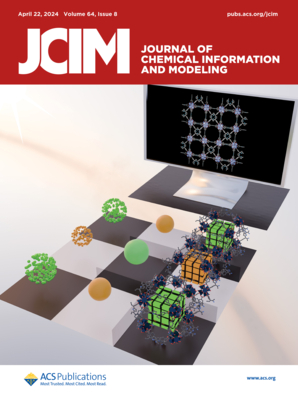高电荷密度柔性环蛋白可极化与非极化CHARMM家族力场的比较分析
IF 5.3
2区 化学
Q1 CHEMISTRY, MEDICINAL
引用次数: 0
摘要
静电相互作用是生物分子结构、稳定性和功能的基础。虽然这些相互作用传统上是用固定电荷力场建模的,但这种方法不能在不同的分子环境中转移。极化力场,如DRUDE,通过明确地结合极化效应来解决这一限制。然而,它们的性能并不均匀地超过非极化力场,因为多种因素,如键合项、二面体校正图和溶剂筛选也会调节生物分子动力学。在这项工作中,我们研究了Im7蛋白,以评估相对于核磁共振实验的非极化(CHARMM36m)和极化(DRUDE2019)力场的结构和动态行为。我们的模拟表明,DRUDE2019比CHARMM36m更好地稳定α-螺旋,包括含有螺旋断裂残基的较短的α-螺旋。然而,这两个力场都低估了环路动力学,特别是在环路I区域,主要是由于二面角采样的限制。此外,盐桥分析表明,DRUDE2019和CHARMM36m在离子相互作用、环境电荷筛选和邻近残基柔韧性的驱动下,优先稳定不同的盐桥。此外,最新的DRUDE2019变体更新了离子-蛋白相互作用的NBFIX和NBTHOLE参数,在模拟Na+-蛋白相互作用方面表现出更高的准确性。这些发现进一步得到了CBD1模拟的支持,CBD1是一种具有β-片和柔性环的蛋白质,在两个力场中表现出类似的稳定结构区域和受限环动力学趋势。这些发现强调了平衡键和非键相互作用以及二面体校正图的必要性,同时结合极化效应来提高力场的准确性,以模拟蛋白质结构和动力学。本文章由计算机程序翻译,如有差异,请以英文原文为准。
Comparative Analysis of Polarizable and Nonpolarizable CHARMM Family Force Fields for Proteins with Flexible Loops and High Charge Density.
Electrostatic interactions are fundamental to biomolecular structure, stability, and function. While these interactions are traditionally modeled using fixed-charge force fields, such approaches are not transferable among different molecular environments. Polarizable force fields, such as DRUDE, address this limitation by explicitly incorporating the polarization effect. However, their performance does not uniformly surpass that of nonpolarizable force fields since multiple factors such as bonded terms, dihedral correction maps, and solvent screening also modulate biomolecular dynamics. In this work, we study the Im7 protein to evaluate the structural and dynamic behaviors of nonpolarizable (CHARMM36m) and polarizable (DRUDE2019) force fields relative to NMR experiments. Our simulations show that DRUDE2019 better stabilizes α-helices than CHARMM36m, including shorter ones that contain helix-breaking residues. However, both force fields underestimate loop dynamics, particularly in the loop I region, mainly due to restricted dihedral angle sampling. Moreover, salt bridge analysis reveals that DRUDE2019 and CHARMM36m preferentially stabilize different salt bridges, driven by ionic interactions, charge screening by the environment, and neighboring residue flexibility Additionally, the latest DRUDE2019 variant, featuring updated NBFIX and NBTHOLE parameters for ion-protein interactions, demonstrated improved accuracy in modeling Na+-protein interactions. These findings are further supported by simulations of CBD1, a protein with a β-sheet and flexible loops, which exhibited similar trends of stable structured regions and restricted loop dynamics across both force fields. These findings highlight the need to balance bonded and nonbonded interactions along with dihedral correction maps while incorporating polarization effects to improve the accuracy of force fields to model protein structure and dynamics.
求助全文
通过发布文献求助,成功后即可免费获取论文全文。
去求助
来源期刊
CiteScore
9.80
自引率
10.70%
发文量
529
审稿时长
1.4 months
期刊介绍:
The Journal of Chemical Information and Modeling publishes papers reporting new methodology and/or important applications in the fields of chemical informatics and molecular modeling. Specific topics include the representation and computer-based searching of chemical databases, molecular modeling, computer-aided molecular design of new materials, catalysts, or ligands, development of new computational methods or efficient algorithms for chemical software, and biopharmaceutical chemistry including analyses of biological activity and other issues related to drug discovery.
Astute chemists, computer scientists, and information specialists look to this monthly’s insightful research studies, programming innovations, and software reviews to keep current with advances in this integral, multidisciplinary field.
As a subscriber you’ll stay abreast of database search systems, use of graph theory in chemical problems, substructure search systems, pattern recognition and clustering, analysis of chemical and physical data, molecular modeling, graphics and natural language interfaces, bibliometric and citation analysis, and synthesis design and reactions databases.

 求助内容:
求助内容: 应助结果提醒方式:
应助结果提醒方式:


